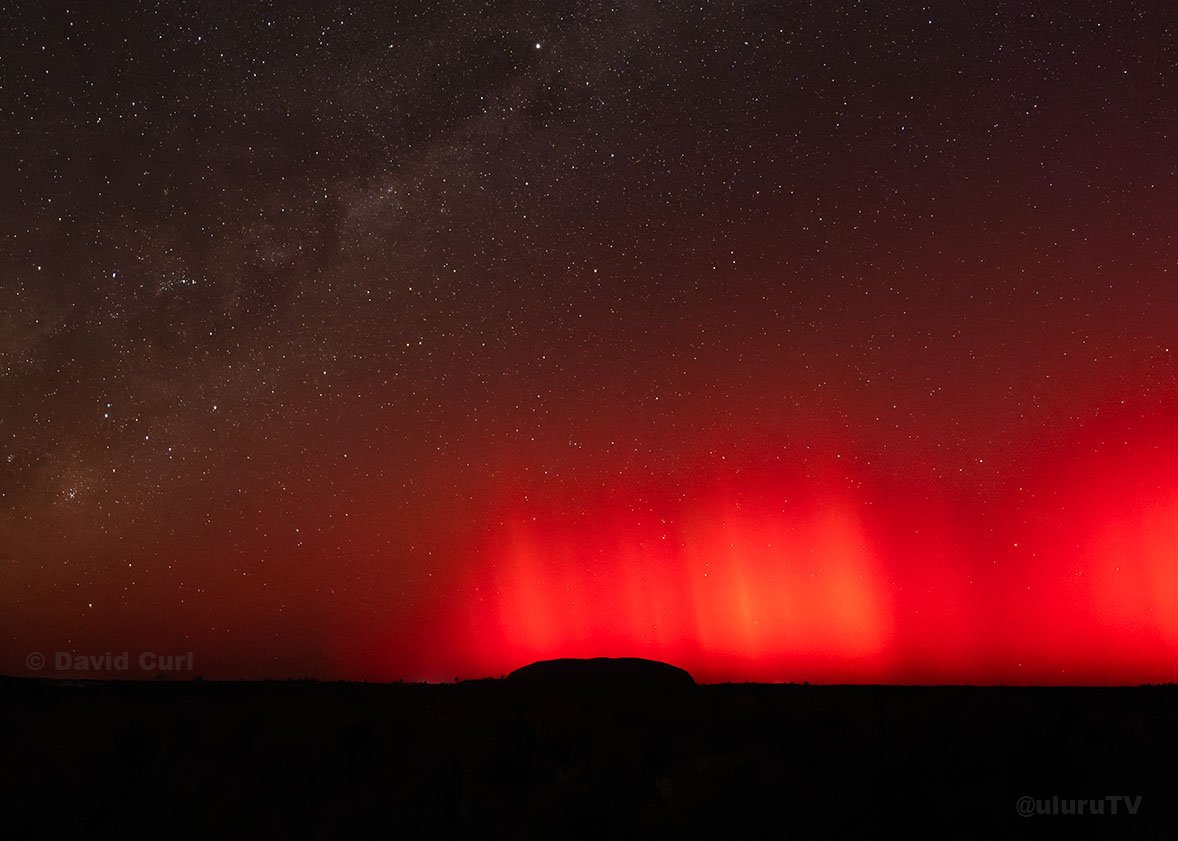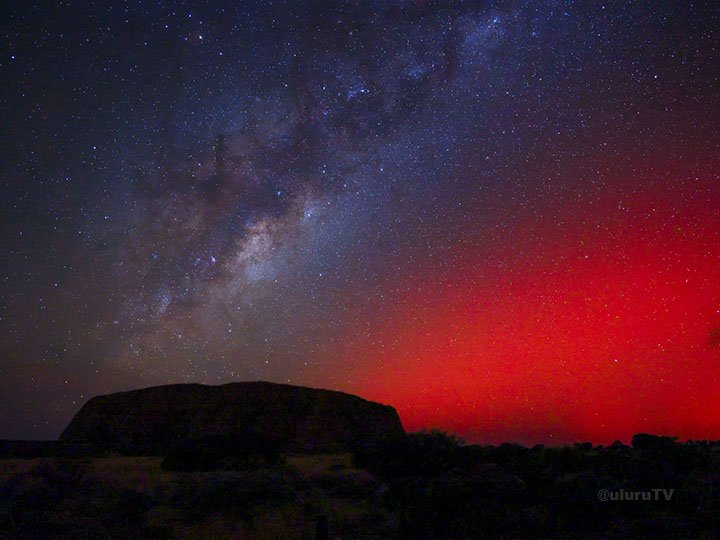The night sky glowed red over Uluru this weekend as the Southern Lights, or aurora australis, could be seen across central Australia.

It’s not often you can see the aurora as far north as central and even northern Australia – it’s over 20 years since Earth has experienced a geomagnetic storm and aurora this strong – and, to the naked eye, it appears as a relatively faint red glow that long-exposure photos dramatically enhance. It’s the result of charged particles streaming towards us from the sun, during a period of increased solar activity, and colliding with gases in the Earth’s atmosphere, the resultant energy being released as light.
Low in our atmosphere (at altitudes of 100-300km), oxygen molecules typically emit greenish colours – which are commonly seen in the aurora borealis, towards the North Pole. At higher altitudes (typically 300km or more above us), oxygen emits red colours like those seen above the horizon at Uluru this week. Nitrogen, the most common gas in our atmosphere, can produce pinks and reds too, though more commonly creates blue colours that are harder to notice in the night sky. The appearance of rays or curtains of red light within the aurora is one of the few times we get to visualise the magnetic field that surrounds the Earth.
The spectacular southern aurora of the past week, seen around Australia, has been matched in the northern hemisphere by the aurora borealis with photographers around the world capturing spectacular images. UluruTV was out at Ayers Rock Resort and around Uluru – Kata Tjuṯa National Park capturing some rare images too.
